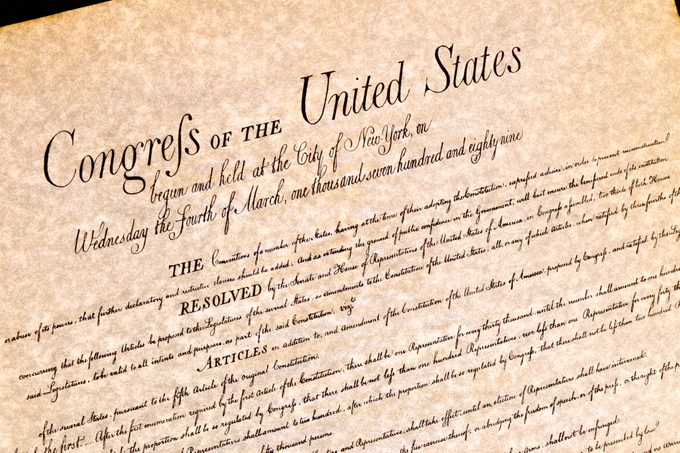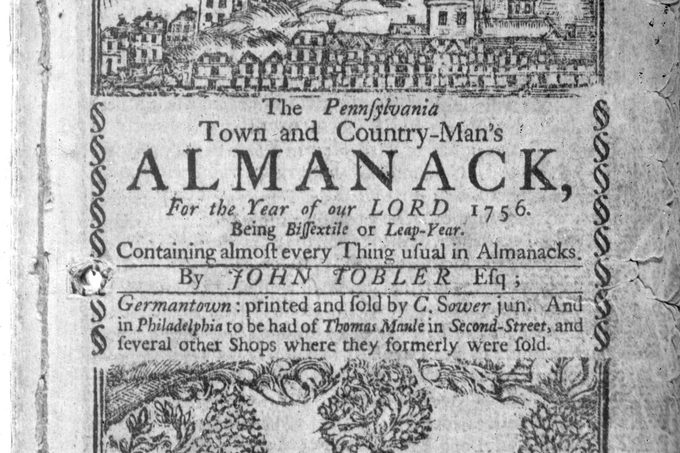Don't worry—our Founding Fathers did know how to spell. So why were s's written as f's in the U.S. Constitution?

This Is Why the U.S. Constitution Uses F’s for S’s

If you look closely at an old document like the United States Constitution, you’ll notice an odd quirk: Most of the time, the writers put an f where an s should be. It wasn’t because the writers didn’t know how to spell—so why was s written as f?
Reader’s Digest gets to the bottom of this weird typographical style that we just don’t use anymore, and thankfully so. But it raises all sorts of questions. Why did the founders do this? Where did it come from? Keep reading to learn more about this outdated grammar rule.
Get Reader’s Digest’s Read Up newsletter for more history, science, travel, tech and fun facts all week long.
What is a long s?
Let’s get one thing out of the way: That f-like letter is not an actual f. It’s called a long s—aka ſ. Unlike a lowercase f, the crossbar doesn’t strike all the way through. You’ll either see it only on the left side, or, as in the glaring example of Congreſs in the Bill of Rights, there will be no bar at all.
You may remember long and short letters from when you learned pronunciation rules in school, but in this case, the “long” moniker is referring to the typographical style, not the sound. The long s was pronounced just like a short s.
Why were s‘s written as f‘s? The history dates back to the first century, when Romans used an early form of it when writing quickly in cursive. When a standardized script was developed for Europe in the eighth century, the ſ/s distinction stayed intact.

When did people use the long s?
The rules regarding when to use the long s vs. short s changed over time, and depended on the writer’s style. By the 17th and 18th centuries, the long s was still being used, but there didn’t seem to be clear rules about when to use it. In general, it would go at the beginning and middle of a word, but there were some exceptions.
If a long s was capitalized, it would look how we’d expect: s. Some writers would use ſ once in a double-s word, like the previously mentioned Congreſs, but others would use it both times, like in biſſextile—and if you’re wondering what that word means, it’s a leap year. Often, a short s would go next to the letter f, such as in misfortune, to avoid confusion.
When did the long s disappear?
Around 1880, the long s suddenly fell out of fashion. It’s thought that as technology advanced, printers wanted to simplify their typesets and kept just one form of s in their kits. That ſure ſounds fine to us.
Why trust us
At Reader’s Digest, we’re committed to producing high-quality content by writers with expertise and experience in their field in consultation with relevant, qualified experts. We rely on reputable primary sources, including government and professional organizations and academic institutions as well as our writers’ personal experiences where appropriate. We verify all facts and data, back them with credible sourcing and revisit them over time to ensure they remain accurate and up to date. Read more about our team, our contributors and our editorial policies.
Sources:
- Medieval Calligraphy: Its History and Technique by Marc Drogin
- TUGboat, Volume 32 (2011), No. 1: “The Rules for Long S” by Andrew West
- History of Information: “The Gradual Disappearance of the Long S in Typography”
- Grammarly: “A Short History of the Long S”






















